Dual laterals improve economic margins and ultimate recovery
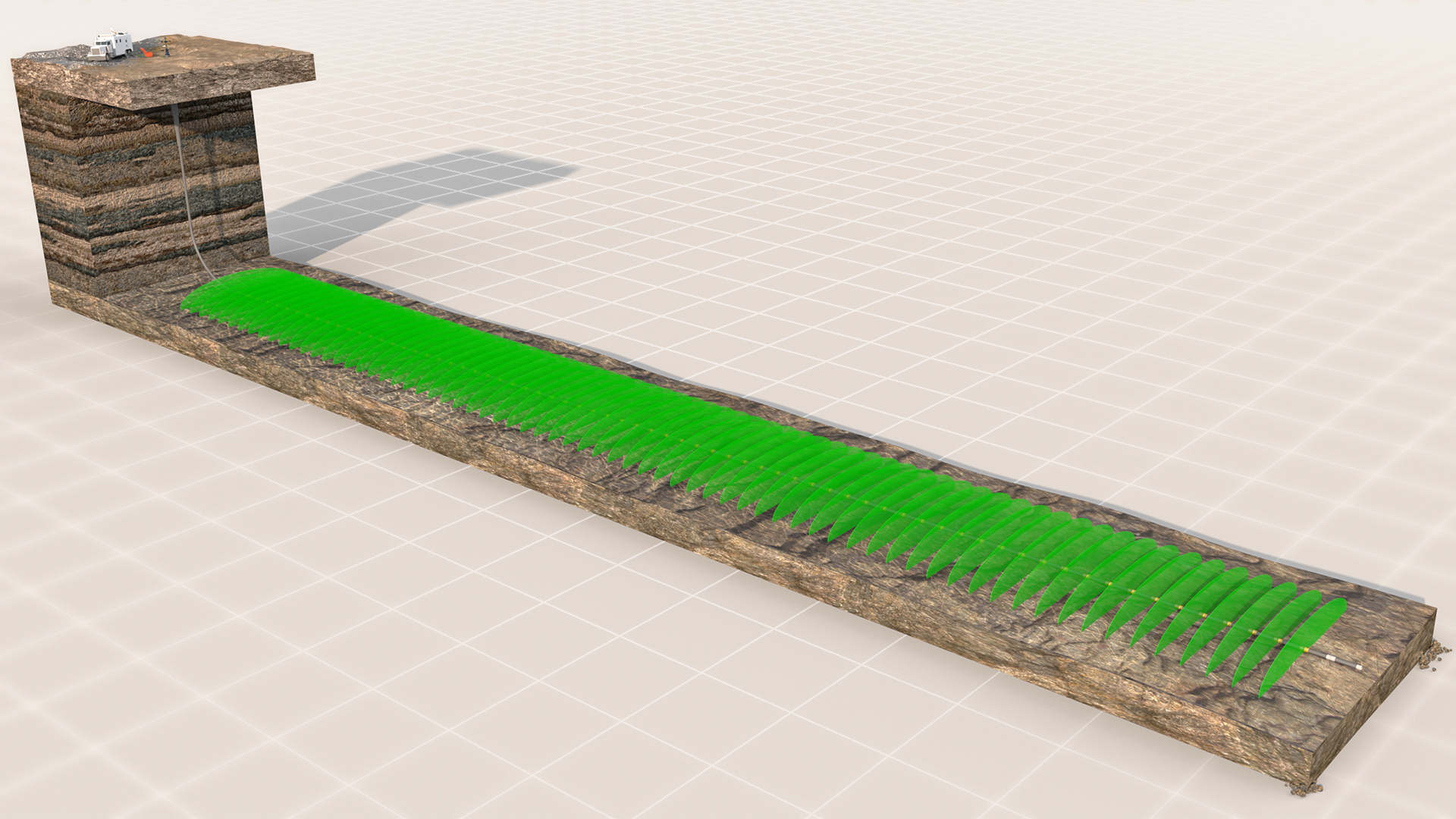
Background
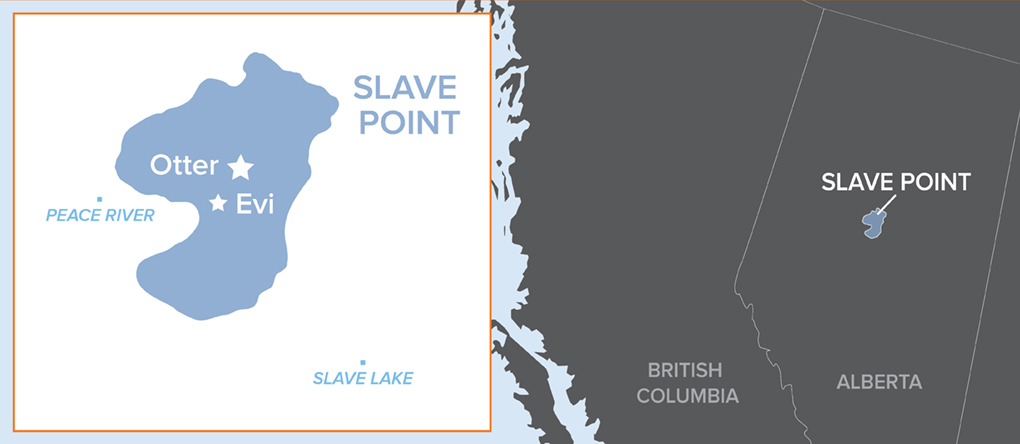
The Slave Point formation in northwestern Alberta is a middle Devonian carbonate reef complex. It has a greater thickness and is less permeable than other tight rock plays in Alberta such as the Cardium and Viking. It produces high quality, light oil with low water and solution gas production rates. The original oil in place is estimated to be approximately 3 to 10 MMbbl per section.
The Slave Point platform was initially targeted for conventional production via vertical wells in the early 1980s. Success was marginal because of the unpredictability of localized sweet spots. As a result, full scale commercial development of this resource was deemed uneconomic. More recently, horizontal drilling and multi-stage fracturing technology has allowed operators to open up lower porosity horizons to enhance flow capacity and improve recoveries.
Challenge
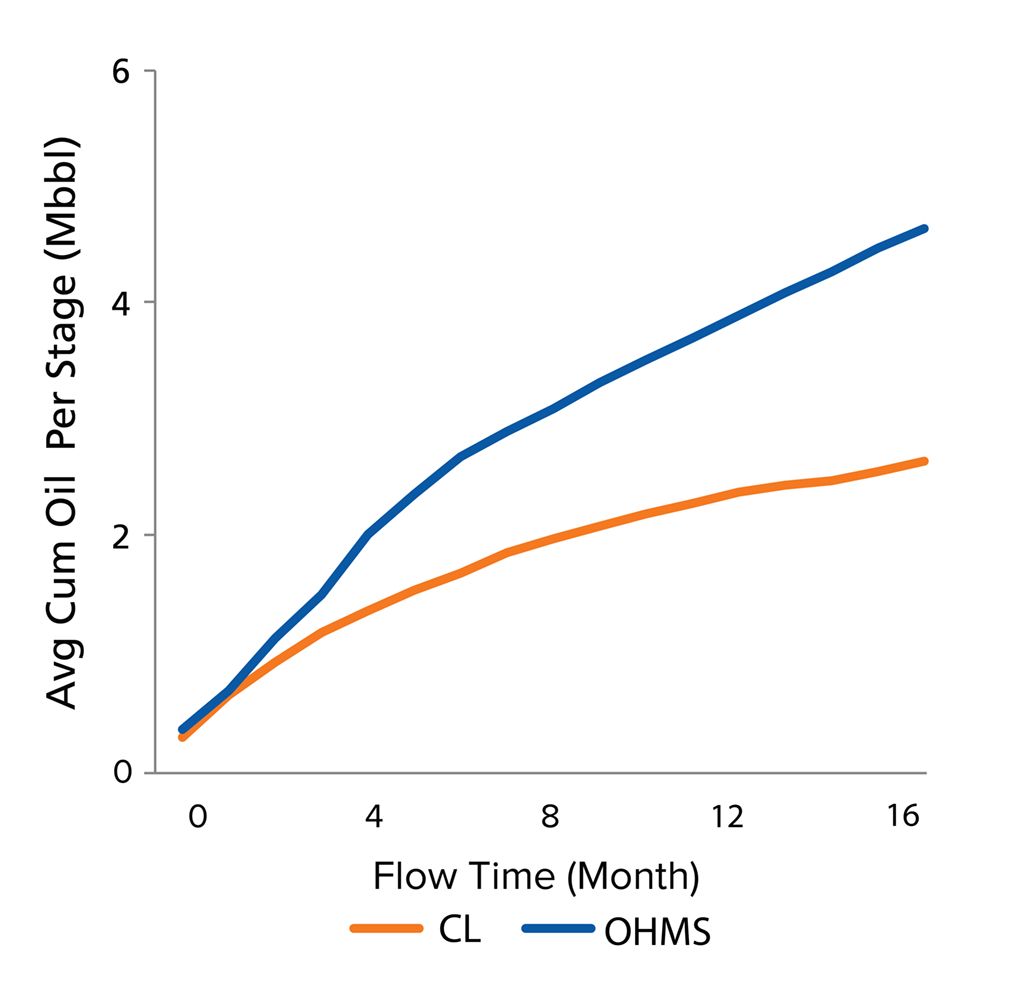
While other Slave Point unconventional fields are in the midst of applying horizontal multi-stage fracture technology, robust development began in the Evi and Otter fields.
An operator developing these areas tried two completion technologies: cemented liners (CL) using abrasive jetting technology and Packers Plus StackFRAC® open hole multi-stage (OHMS) systems using hydraulically set mechanical packers with ball-activated hydraulic ports.
StackFRAC completions resulted in a 32% reduction in average cost per stage and 9% improvement in completion efficiency compared to the CL method. In addition, the wells completed with StackFRAC systems showed 60% improvement in initial production rates and 80% higher cumulative production over the initial 16 months compared to the CL wells (Figure 1). The operator inferred that the additional production could be attributed to the inflow provided by the open hole lateral. In addition, total fluid requirements were reduced by 15% and pumping cycle time was improved by 60%. These improvements are a result of the continuous pumping operation of OHMS systems.
While the switch to open hole StackFRAC system completions improved economics, margins remained low as a result of the high capital structure, leaving the project susceptible to unfavorable reductions in oil price. Therefore, other options needed to be evaluated.
Solution
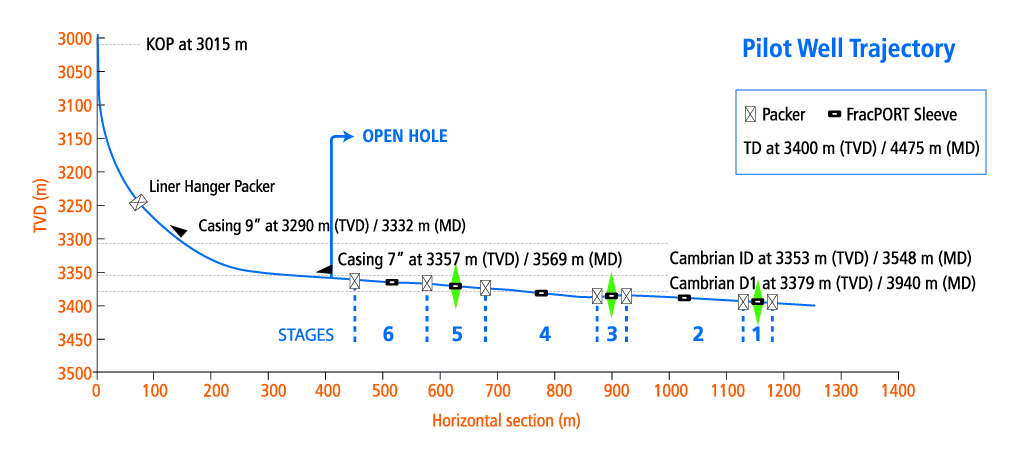
The first strategy to improve economics was to increase the stage density in single laterals. However, at 20 stages per well, the economic gains on a per stage basis diminished, despite an overall improvement in production flow per well. As a result, a more innovative approach in the form of drilling a second lateral to improve inflow was pursued.
The initial dual lateral horizontal wells were drilled off of the conventional single lateral template with a whipstock casing window and were then moved to an open hole juncture. As deployment continued to evolve, the well configuration was changed to a tuning fork with an open hole juncture (Figure 2).
Results
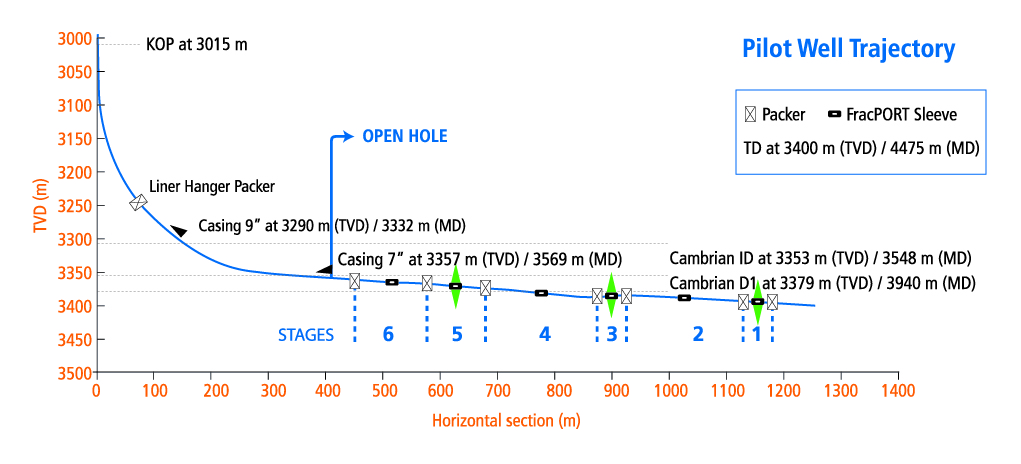
From a drilling perspective, the transition from single to dual laterals resulted in a reduction in cost of 25% and 19% on a per lateral and per stage basis, respectively. Additionally, the transition from the whipstock casing window to open hole junctures resulted in a 2.5% reduction in well costs, 16% reduction in cycle time between legs 1 and 2, and elimination of the inherent operational risks of the whipstock. The tuning fork design further improved the ease of locating an ideal sidetrack point and increased reservoir access.
In terms of the completion, cost savings of approximately 13% on a per stage basis were realized from the single lateral to dual lateral design transition. Through continuous fracture design optimization, stimulation treatment efficiencies continued to improve towards 99%. Initial production rates of the dual laterals with an average of 36 stages demonstrated an 85% improvement when compared to single lateral wells with 20 stages. After 6 months, cumulative production from the dual laterals was 65% higher than the single laterals with 20 stages (Figure 3).
Dual laterals have provided a significant step change in program risk management, cycle times, and economics.
Also, through a transition to dual laterals, the impact on the surface footprint remained unchanged, providing an added environmental benefit. Overall, development with open hole dual laterals with the StackFRAC multi-stage system enables operators to transform poor quality resources into economically viable opportunities.
